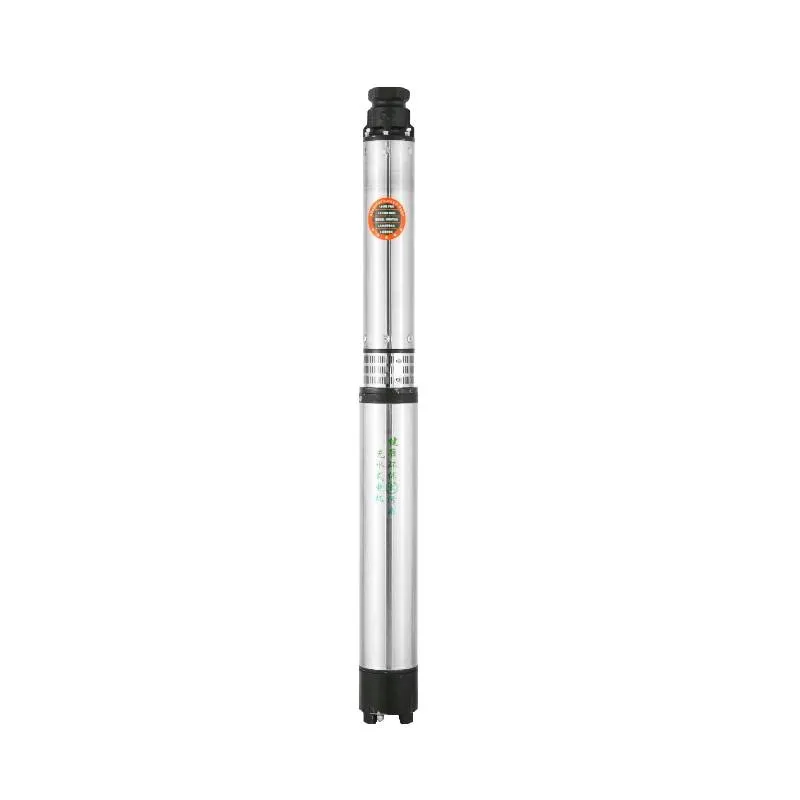ມ.ກ. . 20, 2025 16:05 Back to list
175QJ Deep Well Submersible Pump
When it comes to residential and commercial water extraction, submersible well pumps play an essential role. These pumps are not merely vital components in water systems but are engineering marvels that effectively address the challenges of accessing water sources deep within the earth. However, a question that often arises is How deep can a submersible well pump go?
4. Pump Diameter The diameter of the well casing affects pump size. The standard submersible pump sizes are 4 inches in diameter, but larger diameters can handle greater water flow demands. 5. Terrain and Water Table Variations The local geography and variations in the water table can influence the effective depth of a pump. Understanding the geological conditions will help choose a pump that maintains reliability across seasonal changes. Advantages of Submersible Well Pumps for Deep Wells Submersible well pumps offer several advantages when it comes to deep wells. The submerged nature of the pump significantly reduces energy requirements, as less energy is needed to push water to the surface compared to lifting it. Furthermore, these pumps are less prone to mechanical failures due to their sealed design, which protects internal components from water and sediment that might otherwise cause malfunction. Installation Expertise Installing a submersible well pump, especially for deep wells, requires experienced and licensed professionals. Proper installation ensures the longevity and reliability of the pump. Professional installers will conduct detailed assessments of your well, making precise calculations to recommend a pump that meets specific environmental and usage conditions. Conclusion Submersible well pumps are indispensable for accessing deep water sources, and understanding their depth capabilities and selection process is crucial for efficient water management. They stand out for their ability to deliver reliable water flow under challenging conditions, making them a trusted choice for both residential and commercial applications. For those who face the intricate challenge of extracting water from deep wells, investing in a high-quality submersible well pump, paired with expert installation and maintenance, will undoubtedly offer superior and long-lasting performance. As with any significant equipment investment, ensuring that it is appropriate for your specific needs and installed by professionals enhances both its efficiency and lifespan, securing a sustainable water supply.


4. Pump Diameter The diameter of the well casing affects pump size. The standard submersible pump sizes are 4 inches in diameter, but larger diameters can handle greater water flow demands. 5. Terrain and Water Table Variations The local geography and variations in the water table can influence the effective depth of a pump. Understanding the geological conditions will help choose a pump that maintains reliability across seasonal changes. Advantages of Submersible Well Pumps for Deep Wells Submersible well pumps offer several advantages when it comes to deep wells. The submerged nature of the pump significantly reduces energy requirements, as less energy is needed to push water to the surface compared to lifting it. Furthermore, these pumps are less prone to mechanical failures due to their sealed design, which protects internal components from water and sediment that might otherwise cause malfunction. Installation Expertise Installing a submersible well pump, especially for deep wells, requires experienced and licensed professionals. Proper installation ensures the longevity and reliability of the pump. Professional installers will conduct detailed assessments of your well, making precise calculations to recommend a pump that meets specific environmental and usage conditions. Conclusion Submersible well pumps are indispensable for accessing deep water sources, and understanding their depth capabilities and selection process is crucial for efficient water management. They stand out for their ability to deliver reliable water flow under challenging conditions, making them a trusted choice for both residential and commercial applications. For those who face the intricate challenge of extracting water from deep wells, investing in a high-quality submersible well pump, paired with expert installation and maintenance, will undoubtedly offer superior and long-lasting performance. As with any significant equipment investment, ensuring that it is appropriate for your specific needs and installed by professionals enhances both its efficiency and lifespan, securing a sustainable water supply.
Latest news
-
Water Pumps: Solutions for Every Need
NewsJul.30,2025
-
Submersible Well Pumps: Reliable Water Solutions
NewsJul.30,2025
-
Stainless Steel Water Pumps: Quality and Durability
NewsJul.30,2025
-
Powerful Water Pumps: Your Solution for Efficient Water Management
NewsJul.30,2025
-
Oil vs Water Filled Submersible Pumps: Which is Better?
NewsJul.30,2025
-
Deep Well Pumps: Power and Reliability
NewsJul.30,2025
-
 Water Pumps: Solutions for Every NeedWhen it comes to handling dirty water, the dirty water pump is a must-have.Detail
Water Pumps: Solutions for Every NeedWhen it comes to handling dirty water, the dirty water pump is a must-have.Detail -
 Submersible Well Pumps: Reliable Water SolutionsWhen it comes to ensuring a reliable water supply, submersible well pumps are a top choice.Detail
Submersible Well Pumps: Reliable Water SolutionsWhen it comes to ensuring a reliable water supply, submersible well pumps are a top choice.Detail -
 Stainless Steel Water Pumps: Quality and DurabilityWhen it comes to choosing a water pump, the stainless steel water pump price is a crucial factor.Detail
Stainless Steel Water Pumps: Quality and DurabilityWhen it comes to choosing a water pump, the stainless steel water pump price is a crucial factor.Detail
